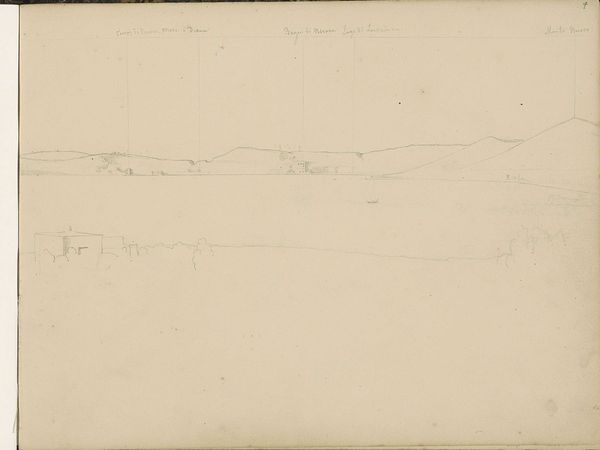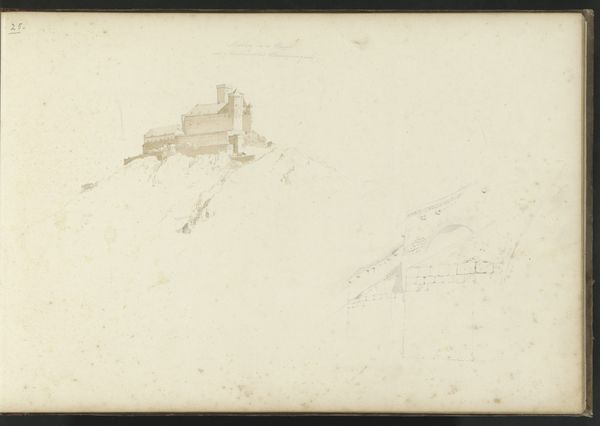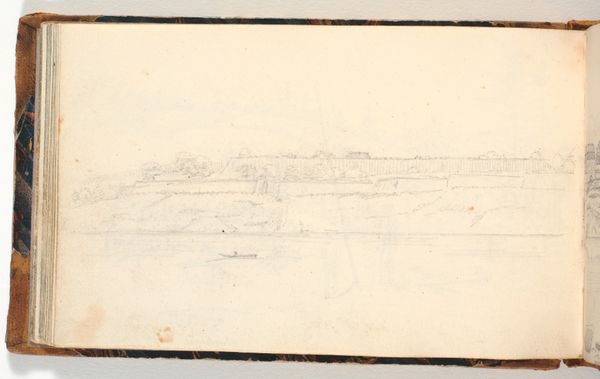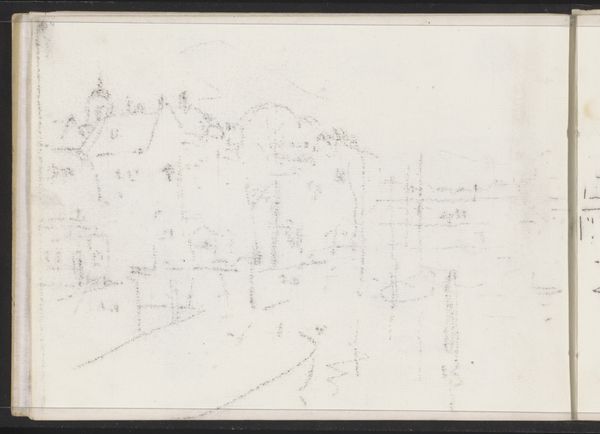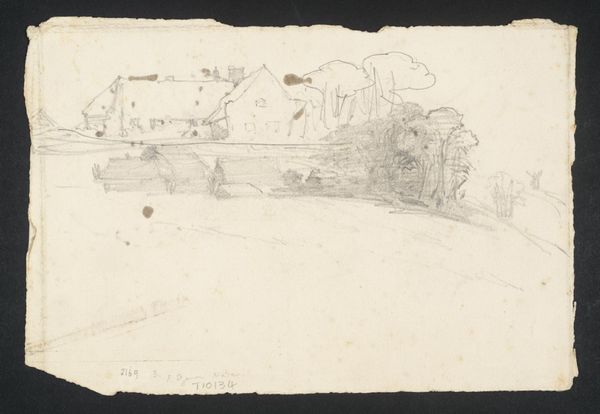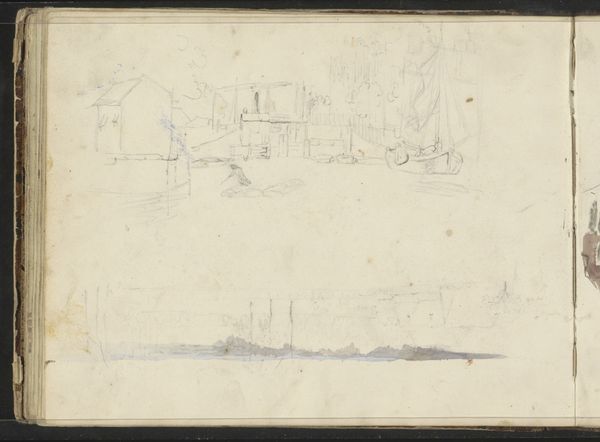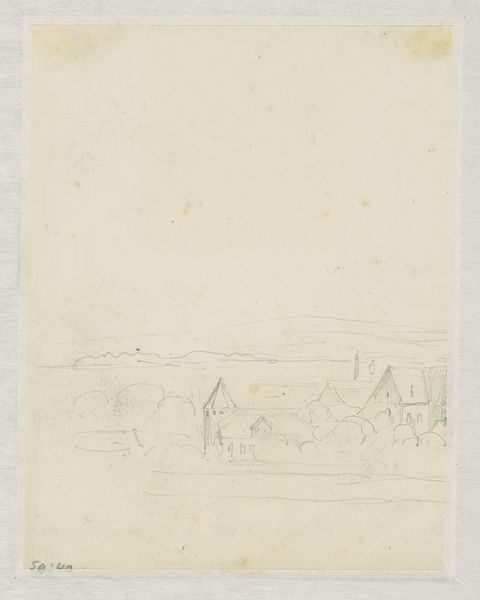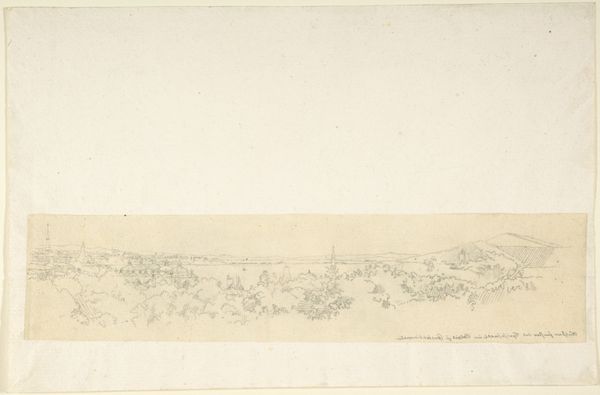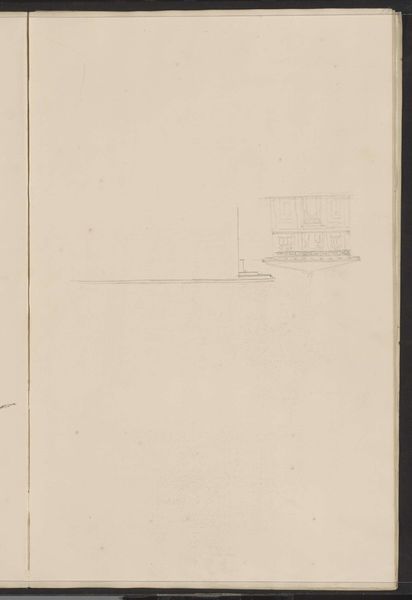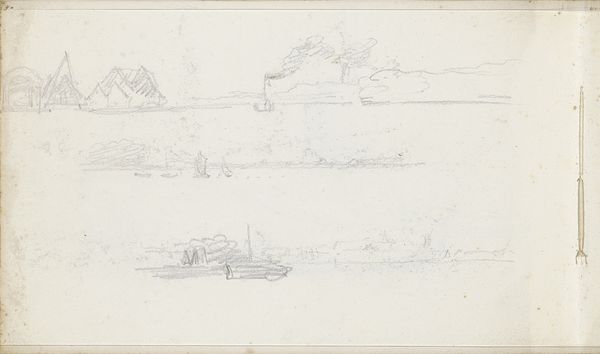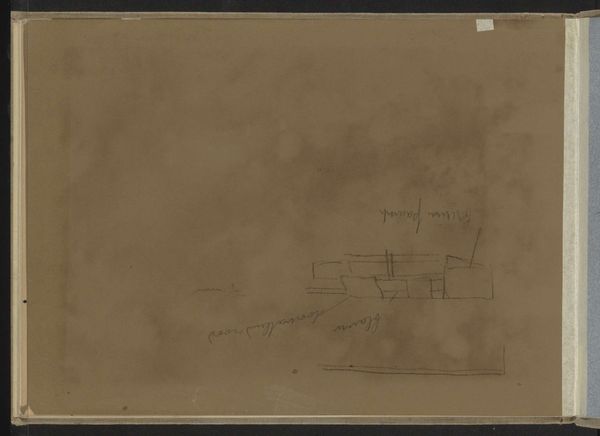
Copyright: Rijks Museum: Open Domain
Editor: So, here we have Kasparus Karsen's "Plattelandswoningen," which roughly translates to "Rural Houses," made sometime between 1820 and 1896. It's a delicate pencil drawing, almost like a page torn from a sketchbook. What strikes me is how unassuming it is – just a quick glimpse of rural life. What do you make of it? Curator: It's interesting you call it unassuming. I see it as a potent reminder of the socio-political forces shaping 19th-century Dutch society. Consider the context: the Netherlands was undergoing rapid urbanization. Drawings like this, depicting simple rural life, became popular. Why? Editor: To be honest, it's difficult to notice from such thin, sketched lines! Curator: Precisely. This isn't just about accurately portraying architecture. It is deeply about what such imagery *represents*. There's nostalgia at play, a deliberate romanticization of a disappearing way of life, and arguably a silent resistance to urban development that many found overwhelming. Look closely; what kind of audience would want to look at these dwellings? How do such simple forms become politically charged, beyond simple sketches? Editor: Ah, I see what you mean. It's like Karsen is offering a curated, perhaps even idealized, view of the countryside, that might contrast with industrialization or overcrowded cities... Perhaps a reflection of how life *was* as opposed to the here and now. I suppose wealthy landowners probably cherished this as memories! Curator: Exactly. Think about where this drawing would have been displayed or collected. Was it publicly exhibited or intended for private viewing? Who had access to these images, and what did that access signify? Understanding this sheds light on the artwork's role in shaping perceptions of rural life and social change. How is an image serving society? Editor: Wow, I hadn't considered all of that. It seemed like just a simple drawing! Thank you; this reframes how I'll now think of art’s role within institutions, shaped by society. Curator: Absolutely. And that shift in perspective is exactly why art history matters.
Comments
No comments
Be the first to comment and join the conversation on the ultimate creative platform.
